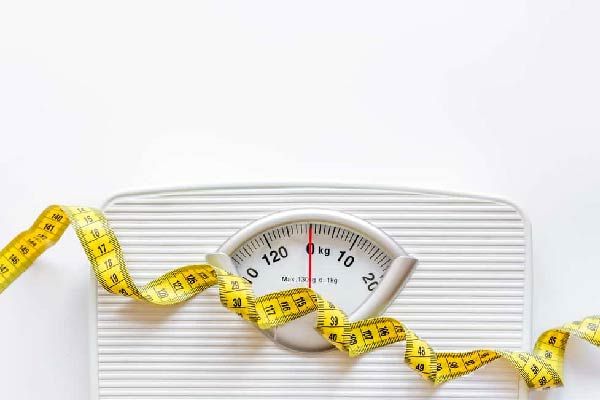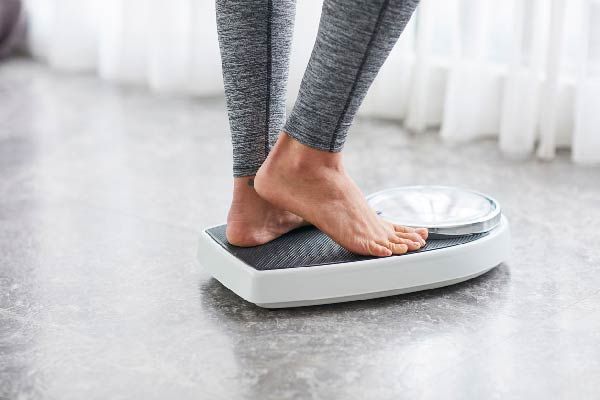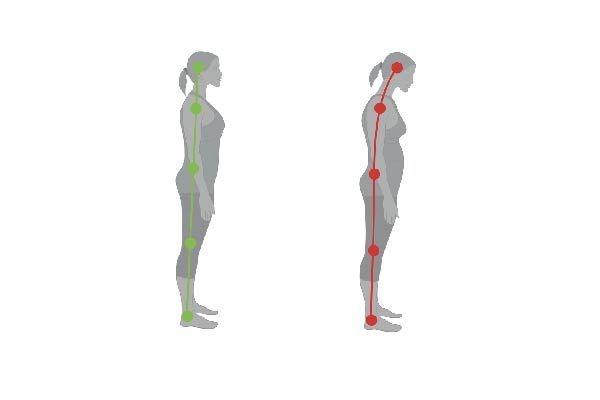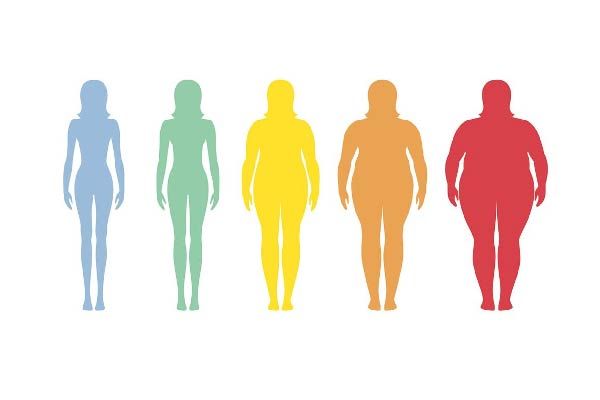
Today, measuring devices reporting the body composition of people using bioelectric impedance method have become an indispensable equipment and application in fitness centers and dietitian clinics. The fact that the values provided by these devices are based on statistical prediction methods, being affected by many statistically uncontrollable factors such as race, health, diet status, sports and activity history, and even clothing worn, leads to the questioning of their accuracy. Since there is no alternative method or device in the sector, these devices are demanded by the enterprises, although the benefit to value ratio is very low.
In this article, we will mainly talk about high error rates and inconsistent measurements of the BIA devices. However, we will try to do this without moving away from the purpose-benefit-value axis and avoiding manipulative and unscientific comments. Be sure that this article will also help you get more out of your existing BIA devices.
Even in advanced BIA devices, the error rate rises up to 8%.
This is actually one of the most controversial issues for the BIA devices, and it is issue which is manipulated the most by the manufacturers. Manufacturers claim that their devices measure with high precision and low error rate, and they show the differences in the results of the measurements repeated on the same person at short intervals using their devices to support this. The fact that a measurement method’s giving a consistent result and a correct result are quite different from each other. At this point, the error rate is determined by comparing it with proven results.
To explain it with an example, let’s assume that we have a simple scale with an incorrect result that shows 4 kg lower per 100 kg. The margin of error of this scale is clearly 4%. The fact that the successive weighing results of the same person on this scale are the same does not mean that this scale definitely gives correct results. In the link below you can see how the manufacturer manipulates the subject with the values given. Even they had to explain the differences in the results of successive measurements with the sentence stating “Small differences may occur due to resistance differences in successive measurements”. Examining the results of the B brand, you can see that it gives different results of about 4% even in terms of consistency.
Let’s assume that the results of some of these developed devices are consistent. So what is the actual error rate of the BIA devices mentioned? To do this, we need to take a closer look at BIA measurement technology.
What is BIA?
It stands for bioelectrical impedance analysis. Although its name is pretty fancy, its working principle and technology is quite simple. They transmit a low level electrical current through your body, measure the degree of your body’s resistance to impedance, then use this data to estimate the amount of body fat. In other words, what we call impedance is the resistance value that all of us will remember from the physics courses at secondary and high school. Basically, the BIA devices are not different from resistivity meters used by the electrical and electronics technicians around you. I even claim that you can design your own BIA device at home after reading this article
The most important point you need to know before going into detail is that the BIA devices do not directly measure the body water, fat, or muscle percentage but it uses an indirect measurement method. The mercury thermometers in your homes can be given as an example. Actually, what this device directly measures is the expansion value of the mercury, and it gives the temperature of the medium or the object it touches by using the formula defining the proportion of the expansion of mercury with the temperature. The accuracy or error rate of these values depends on the amount of mercury used and the width of the cross section. As a result, as the length of the thermometer increases and the diameter of its tube is narrowed, its precision and accuracy increase.
The BIA devices also work with this logic. Based on the fact that the electrical conductivities of fat, water, and muscular tissues are different, it tries to calculate (estimate) the percentage of the fat, water, and muscular tissue in the total mass using a set of theories and assumptions.
What are these assumptions?
- The resistance encountered when a low frequency is transmitted from the device is the impedance of extracellular fluids. Because the current with this frequency value cannot pass through the cell membrane.
- The resistance encountered when a high frequency electricity is transmitted by the device is the impedance of intracellular fluids.
- R = ρL/A, that is to say resistance = resistivity x length / cross-sectional area. Many of us will remember this formula from physics courses at secondary and high school. The resistance of a homogeneous object increases with the increase in length. It decreases with the increase in the cross-sectional area. According to this formula, the resistance value measured in the person is called impedance when we transmit a 50 kHz frequency by this BIA device, and we assume that this impedance value is due to extracellular fluids. Assuming that all is due to water, we obtain the following formula when we write the resistivity of water instead of the resistivity value:
impedance value = resistivity of water x length / cross-sectional area
To conclude,
we can state that “length/cross-sectional area = impedance/resistivity of water”.
4. It is assumed that the human body is like a cylinder in shape. (Unfortunately, the BIA devices assume that the human body was a cylinder, on the other hand, multiple-electrode measurement devices assume that the human body consisted of 5 cylinders: arms, legs, and trunk).
Now, let’s do some mathematical operations using these assumptions.
Let’s handle the left side of the equation we obtained in paragraph 3, namely the length/cross-sectional area. Now let’s multiply both the numerator and the denominator. It will not change the value of the fraction.
(length x length ) / (cross-sectional area x length)
Multiplying the cross-sectional area of a cylinder with its length gives its volume (we assumed that the human body as a cylinder in paragraph 4). Thus, we obtain the following equation:
length / cross-sectional area = (length x length ) / volume. When we write the other side of equation, we have the following formula:
(length x length ) / volume = impedance / resistivity of water
finally we obtain the following equation:
volume = length x length x impedance / resistivity of water
Bingo !!!! We have a formula to calculate the volume of body water!!!!!
We say bingo because our BIA device has completed its job. After that, all we have to do is to tell you your fat and muscle percentages based on this formula by using the data obtained from academic and statistical studies of decades!!!
To give a simple example,
According to academic studies, the fluid percentage of a lean tissue mass is 73% on average. According to the data provided by our BIA device, we can easily calculate your lean tissue mass since we can calculate our intra-tissue water content and total water content.
As you can guess from the above-mentioned working principle, the accuracy of the measured values is questioned for many reasons.
Assuming that the human body consists only the components of fat, muscle, and water seems to be the biggest basic error. Many factors such as the differences of our organ tissues, the minerals in our bodies, different types of adipose tissues, and air spaces in the digestive and respiratory systems refute these assumptions. Even though the manufacturers try to increase the accuracy of their devices by developing new measurement systems, using different frequency ranges, or adding new coefficients to the formula such as age and gender, it is not possible for them to cope with the chemistry of the human body by this weak measurement system.
Assuming that the human body had a cylindrical shape is an approach that people do not believe, and they say “Are you kidding?”. It is this assumption that makes the BIA devices’ basic theory questioned as a measurement method. I do not want to bore you with too many math calculations. But to put it briefly there is a 17% -20% difference between the volume of a male body of average size and the volume of a cylinder calculated using the measurements of the height and the waist circumference of the person. Therefore, some devices demand several anthropometric dimensions be entered as data to minimize errors due to this difference in calculations. Also, the main reason for the development of the BIA devices consisting of 4 or more electrodes is to regard the human as 5 cylinders, thereby minimizing the calculation errors.
Assuming that all parameters affecting the measurement are stable : Personally, this is the biggest reason why i found the BIA devices unreliable. There are dozens of parameters that affect the measurement result and they cannot control them whatever they change in the system. In a healthy human body, 2.5 liters of fluid are constantly displaced. If there is no other factor for dehydration, you take 2.5 liters of liquid from the outside and you lose this fluid through urine, sweating, feces, evaporation of the moisture in the skin, and breathing. Thus, your body carries out normal metabolic processes in a healthy way. In some cases, this balance may change in the positive and negative directions such as edema, mineral balance, excessive activity, menstruation, elevation of body temperature, the diet applied, etc. At this point, the biggest weakness of the BIA devices emerge. Because the BIA systems firstly calculate (estimate) the amount of the fluid in the body. Then, they perform other calculations assuming that the person’s electrolyte balance is stable and at normal values. However, it is a huge mistake to assume that these data are stable in extremely overweight and underweight people. The studies comparing the BIA and DXA measurements revealed that the BIA measurements were found to give lower fat values compared to DXA in overweight people, contrary to high values of fat content in underweight people. I would like to warn dieticians who caring for overweight clients in this regard. They should not take into account the change in the BIA fat percentages, particularly for the obese male patients, who started sports together with the diet, when they begin to lose weight. In fact, you will also see that the fat percentage does not change significantly compared to the weight they lose. The BIA device manufacturers introduce some pre-measurement conditions and rules to minimize the error rate in these assumptions. All of the conditions such as not eating or drinking anything and not doing sports before 4-8 hours, urinating before the measurement, not drinking alcohol, etc. are required for theoretically keeping the water and mineral balance of the person stable at normal values. However, I would like to warn again that it does not mean that a controlled diet of 4-8 hours in overweight and underweight people is not suitable for these individuals to measure water and mineral balances. It should be kept in mind that it might also have the opposite effect. I advise them to follow up your clients of this case with a measuring system (caliper, anthropometric measurements, etc.) besides the BIA devices. Likewise, it is necessary to pay attention to the fat change follow-ups using the BIA devices for the individuals having regional slimming by cardio and exercise programs without making much change in their normal diets. Because an individual who has just started cardio training will experience an increase in plasma volume in the adaptation process. This will cause a change in the total body water index, and it will affect the BIA results. In fact, my warnings above are just two of the examples that affect the results of the BIA devices. There are hundreds of factors affecting the water and electrolyte balance in the human body daily, hourly or even by seconds; they all directly affect the BIA results.
The uncontrollable nature of electricity: In order to minimize errors due to these electrical assumptions, the BIA device manufacturers specify many conditions and application methods to be followed before the measurement such as the arm position (generally 45 degrees), placing a towel under the armpits to prevent current flow, keeping hands and feet not too dry nor damp, and keeping no metal on the body. However, these conditions are not sufficient to control the nature of electricity. Hundreds of factors such as skin thickness varying due to ethnic and genetic reasons, clothes worn, humidity and heat of the environment, posture disorder or scoliosis, hormonal imbalances, prostheses, implants, hair, body temperature, etc. affect the transmission of electricity through your body. You can even see how these factors, which seem insignificant, affect the measurement result by making a very simple experiment with your BIA device. Measure your values using the BIA device following all warnings and methods specified by the manufacturer. Then rest in a lying position for 1 hour in a position where you will not sweat, and measure your values again. You will see how resting, not only the physical activity, affects the BIA measurement results!!! Because your body position will lead to changes in the regional density of the body fluids due to the effect of gravity, thereby directly affecting the impedance value.
High error rates of the formulas and methods used: As mentioned at the beginning, the BIA devices only measure the frequency differences in the electric current and calculate the fluid volume using a set of assumptions and make predictions about the body composition using the formulas and data developed as a result of academic studies. So, what are these academic studies?
I don’t want to get into its historical development very much, but to summarize the situation at the current stage, the following results can be stated:
- The most accurate and indisputable measurement method for body fat measurement is cadaver examination
- The DEXA devices are accepted to provide the most accurate and consistent results by the academic community, and they are regarded as the gold standard. These medical devices use X-rays in their measurement methods. They are mainly used for bone density measurements. One imaging costs about USD 40. It is a very expensive system.
- As emphasized in the BIA technology, all kinds of devices and methods, except for DEXA devices, used for academic or commercial purposes obtain results based on body volume. For example, Bod Pod devices take the individual into an airtight container, and they determine the body volume by making use of the air displacement. This method, which is also known as the underwater weighing method, has been frequently used in academic studies before the recent technological developments. Simply, it tries to find the result measuring the volume of water overflowing by dipping the individual into a tank full of water. In fact, formulas that calculate body fat percentage using anthropometric (body size) measurements also focus on finding your body volume based on your body measurements. Then, all these measurement methods, just like BIA, estimate the body fat percentage and body compositions using the formulas based on medical research and statistical results. Of course, not all manufacturers of these devices attempt to develop a formula based on medical results and data. Their resources and budgets do not allow it. Instead, they use the formulas and calculations of the methods that have been developed and already accepted. For example, the calculations of Bod Pod devices are based on the formulas of underwater weighing method. In fact, it is a commercial method developed to eliminate the difficulty of using the underwater weighing method. Likewise, the BIA devices use body fat percentage formulas derived from the underwater weighing method. Instead of the volume variable in the formula developed using the underwater weighing method, the value of the volume calculated using the BIA measurement is entered, and the formula coefficients are arranged using this value.
Why do commercial devices always use the formulas of the underwater weighing method? The answer is very simple. Almost all academic studies were conducted using this measurement system, and these studies were published publicly. There, they can be easily accessed, and you do not have to pay a price for the formula and information you use.
Now, let’s come to the drawbacks of this situation for the BIA systems;
- The results reflect the subject profile of the measurement method based on. In the studies conducted, medical research and data are obtained from some subjects. Therefore, the formulas derived from these results and the results reflect this group of subjects. However, the ethnic genetic factors create significant differences in body composition.
- Each measurement system has some error margin due to experimental setup or environmental conditions. For example, in the underwater weighing method, air in the subject’s lungs and digestive system is a factor affecting the results. Some assumptions and correction formulas are used to eliminate this. However, it cannot be accepted that these correction coefficients give definitive results in a group of 1000 subjects. Therefore, it is assumed that the obtained formula has an error margin. The BIA formula, which is based on this calculation, automatically adds this error margin into its system. For example, the individual is assumed to have 100 ml of air in the his/her digestive system in the underwater weighing method. The effect of this assumption on the final result is about 1.5%.
CONCLUSION:
- The results of BIA devices are neither repeatable and nor consistent. At this point, the results of the same person being tested successively on the same machine do not indicate the consistency of the device. The results of the individual, whose weight, activity intensity, and diet have not changed, can only be proof that the device gives consistent results if those results remain the same. Otherwise, the manufacturer must prove that other factors do not affect the measurement results. However, as explained with many examples above, the BIA results are affected by many uncontrollable factors.
- The error rate of the results is quite high. Due to the limitations of the measurement method and technology, several assumptions and basic formulas mentioned above increase the error rate. Manufacturers make arrangements in the coefficients and rate corrections in their formulas to reduce these error rates so that their systems provide relatively more consistent results. However, the global brands that serve a wide population have a hard job in this regard. It is very difficult to optimize the results in populations with different ethnic and genetic characteristics.
- Manufacturers manipulate test results and technological facts about their products. Of course, it is impossible to perceive some features and system methods as a simple user. However, it is not pleasant for manufacturers to turn this into an opportunity with commercial concerns. For example, the Inbody brand offers proof that its devices are not affected by the gender difference, as well as proof that their devices give results directly by measuring without using any formula or estimation method. At the beginning of my article, I claimed that you would be able to design your own BIA device at home. Now, I am taking my claim a step further by claiming that you can design a BIA device that is not affected by the gender factor at home.
Total body water (TBW) = 0.372 (height2/R) + 3.05 (gender) + 0.142 (body weight) – 0.069 (age)
The formula above is used by the BIA device of X brand to calculate your total body water. In this equation, R is the measured impedance value. The gender variable is set to 1 for males, and 0 for females. How can we eliminate gender variable from this formula? It is quite simple, we will also make an assumption using the results of a medical research. For example, while the average heart rate is between 70-72 in males, it ranges between 78-82 in females. You can avoid the trouble of asking the gender of the subject by adding a pulse meter to your device design. In the meantime, you can get the patent for this device.
Of course, I do not know how Inbody did it, but I am sure that they did not eliminated the gender factor from their formulas. Without these factors, the BIA technology can not provide analysis results.
 Although the formulas for determining your ideal fat ratio are still controversial in the medical and fitness world, we share the two most commonly used measurement parameters below to get an average figure:
Although the formulas for determining your ideal fat ratio are still controversial in the medical and fitness world, we share the two most commonly used measurement parameters below to get an average figure:







 In Turkish cuisine, sufficient protein intake from various sources is provided in almost every region. So it can already be found in your diet, but the protein in your diet may be from weaker and unhealthy sources (fatty red meat, processed foods, etc.). So first choose to go for healthy protein sources. Remember that your protein requirement depends on your age, gender, and how active you are.
In Turkish cuisine, sufficient protein intake from various sources is provided in almost every region. So it can already be found in your diet, but the protein in your diet may be from weaker and unhealthy sources (fatty red meat, processed foods, etc.). So first choose to go for healthy protein sources. Remember that your protein requirement depends on your age, gender, and how active you are.


 In the BIS method, on the other hand, the patient is under continuous measurement (for devices that measure at short intervals, such as 5 seconds). Thus, a medical interpretation can be made about the body water percentage.
In the BIS method, on the other hand, the patient is under continuous measurement (for devices that measure at short intervals, such as 5 seconds). Thus, a medical interpretation can be made about the body water percentage.